As much as we want our children to be able to enjoy jumping up and down in bounce houses or diving into the pool, we have to consider potential related injuries. Here, the six riskiest party playthings and what parents can do to guard against related accidents …
How do you protect your kids from the dangers associated with these activities? Image via Kelly DeLay/Flickr How to make sure they’re safe: Children should always be supervised by adults, even if lifeguards are present. “Parents should designate a water watcher; someone who is the designated person to watch the pool undistracted for 15-20 minutes,” advises Jennifer Hoekstra, an injury prevention specialist at Helen DeVos Children’s Hospital in Michigan. Other smart rules to set: “Unsafe water activities, such as breath-holding contests and dunking, should be discouraged,” says Dr. Kay Leaming-Van Zandt, M.D., emergency medicine physician at the Texas Children’s Hospital. She also recommends enclosing and covering pools and hot tubs and enrolling your children in water safety and swim classes, as well as learning first aid and CPR. How to make sure they’re safe: Parents who’ve been there, done that with piñatas recommend that adults in charge designate a “safe zone,” where everyone is required to stand while one person is hitting the piñata. Also, try to spread the candy out a bit before all the children come running, so as to avoid trampling or a painful pile-up! How to make sure they’re safe: Teresa Cappello, M.D., pediatric orthopaedic surgeon at Loyola University Health System, notes that a common source of injury is children of different ages and sizes jumping at the same time. For that reason, Dr. Cappello recommends placing kids into small groups by age and size and having an adult at the entrance to ensure the appropriate kids are playing together. You should also limit the number of children in a bounce house at a time. Too many kids means a higher risk of one falling out of the entrance and injuring themselves on the ground. “It’s more fun for kids if they have space to play and it’s good for them to learn to take turns,” explains Cappello. “If you’re planning a party, add bounce house monitor to your list of volunteer duties. Adult supervision really is the best way to prevent injuries.” How to make sure they’re safe: Because three quarters of all trampoline injuries occur when more than one child was jumping on the trampoline, and the smaller jumpers are 14 times more likely to get hurt than the heavy jumpers, experts say allowing only one child on a trampoline at a time may be the best way to go. Parents can also make sure the trampoline sits on a level surface with no trees or other hazardous objects nearby. Also, warning against flips and somersaults can preempt head and cervical spine injuries. How to make sure they’re safe: “Proper footwear, a snug-fitting harness, and a properly fitted helmet are essential,” advises Hoekstra. “Also, be sure the spotter is not distracted. And if you notice your child getting tired, it’s okay to take a break, and try again at another time.” How to make sure they’re safe: “Slip and slides can be fun and a great way for children to keep cool in the summer; however kids need to be taught how to use them!” advises Hoekstra. “There should only be one child on the slide at a time, and be sure the previous slider is out of the way before the next child slides.” Hoekstra also recommends ensuring that there are no rocks, twigs, or sharp object under the slide and that they are placed on level ground with a safe ending point.

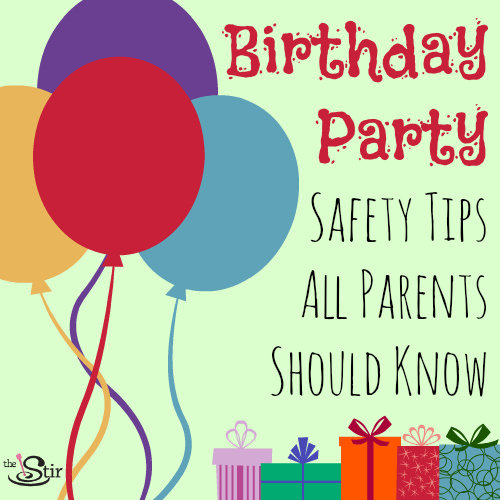
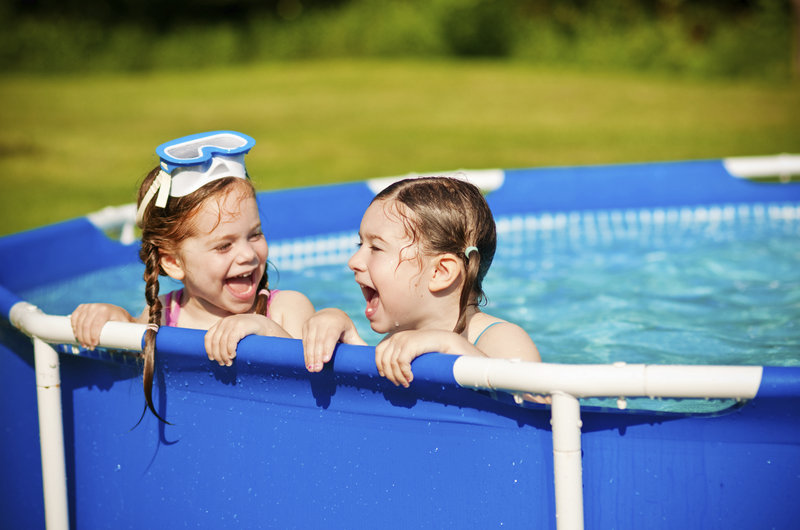
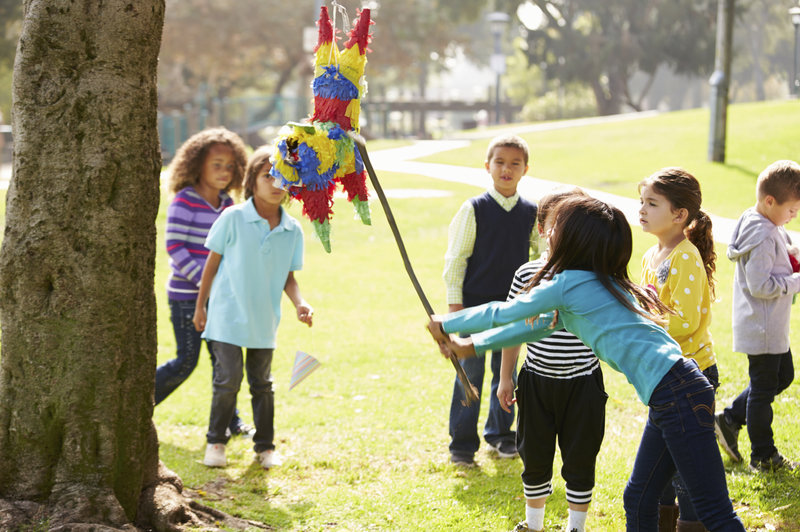
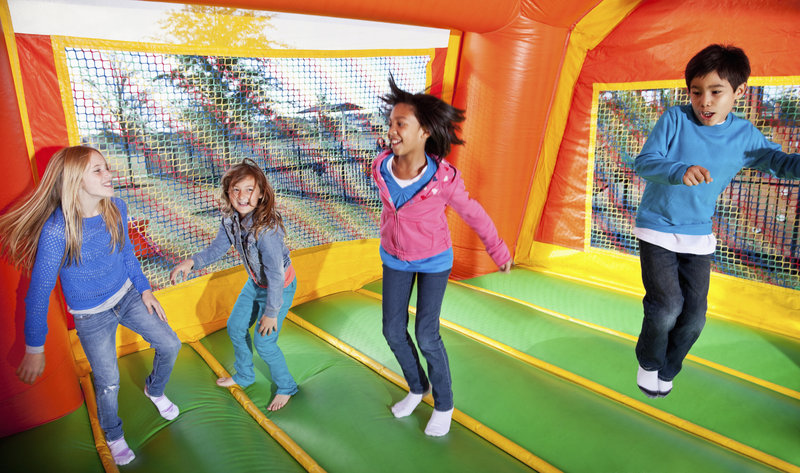
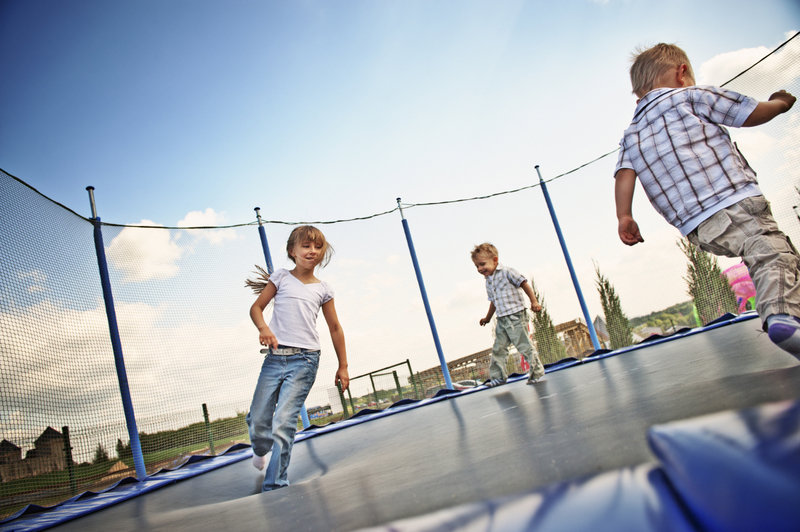
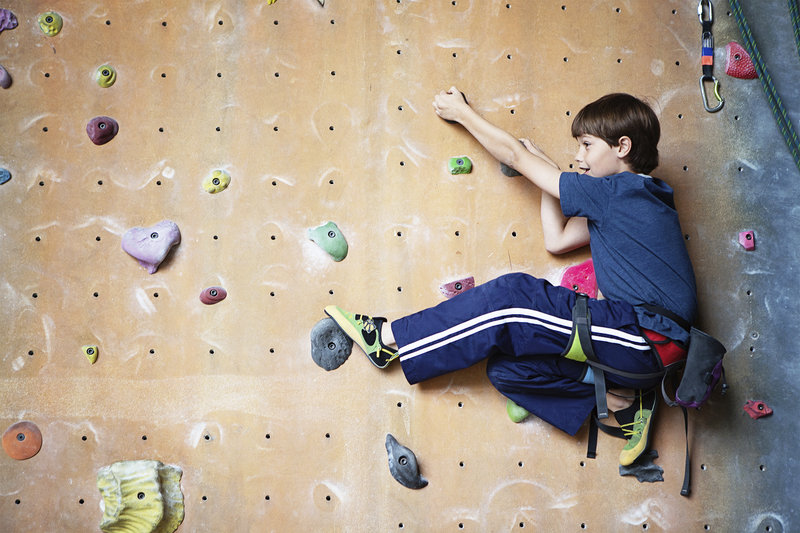
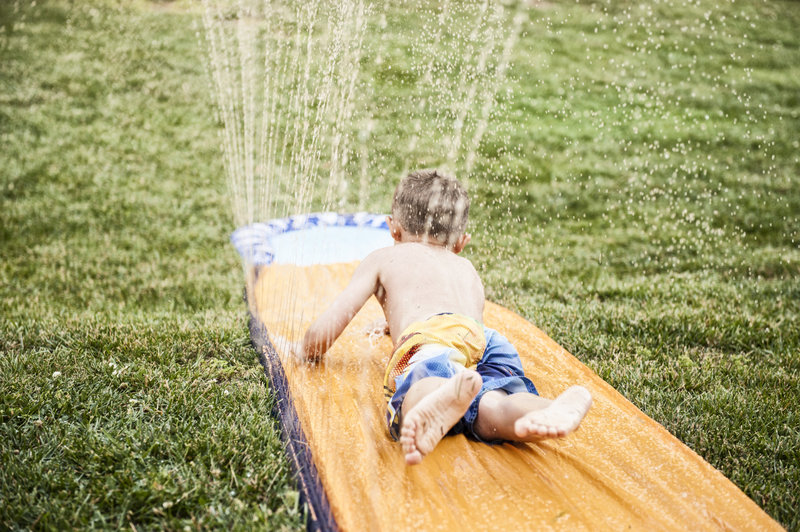

title: “6 Most Dangerous Kid Party Activities How To Make Them Safer” ShowToc: true date: “2024-10-21” author: “Daniel Wall”
As much as we want our children to be able to enjoy jumping up and down in bounce houses or diving into the pool, we have to consider potential related injuries. Here, the six riskiest party playthings and what parents can do to guard against related accidents …
How do you protect your kids from the dangers associated with these activities? Image via Kelly DeLay/Flickr How to make sure they’re safe: Children should always be supervised by adults, even if lifeguards are present. “Parents should designate a water watcher; someone who is the designated person to watch the pool undistracted for 15-20 minutes,” advises Jennifer Hoekstra, an injury prevention specialist at Helen DeVos Children’s Hospital in Michigan. Other smart rules to set: “Unsafe water activities, such as breath-holding contests and dunking, should be discouraged,” says Dr. Kay Leaming-Van Zandt, M.D., emergency medicine physician at the Texas Children’s Hospital. She also recommends enclosing and covering pools and hot tubs and enrolling your children in water safety and swim classes, as well as learning first aid and CPR. How to make sure they’re safe: Parents who’ve been there, done that with piñatas recommend that adults in charge designate a “safe zone,” where everyone is required to stand while one person is hitting the piñata. Also, try to spread the candy out a bit before all the children come running, so as to avoid trampling or a painful pile-up! How to make sure they’re safe: Teresa Cappello, M.D., pediatric orthopaedic surgeon at Loyola University Health System, notes that a common source of injury is children of different ages and sizes jumping at the same time. For that reason, Dr. Cappello recommends placing kids into small groups by age and size and having an adult at the entrance to ensure the appropriate kids are playing together. You should also limit the number of children in a bounce house at a time. Too many kids means a higher risk of one falling out of the entrance and injuring themselves on the ground. “It’s more fun for kids if they have space to play and it’s good for them to learn to take turns,” explains Cappello. “If you’re planning a party, add bounce house monitor to your list of volunteer duties. Adult supervision really is the best way to prevent injuries.” How to make sure they’re safe: Because three quarters of all trampoline injuries occur when more than one child was jumping on the trampoline, and the smaller jumpers are 14 times more likely to get hurt than the heavy jumpers, experts say allowing only one child on a trampoline at a time may be the best way to go. Parents can also make sure the trampoline sits on a level surface with no trees or other hazardous objects nearby. Also, warning against flips and somersaults can preempt head and cervical spine injuries. How to make sure they’re safe: “Proper footwear, a snug-fitting harness, and a properly fitted helmet are essential,” advises Hoekstra. “Also, be sure the spotter is not distracted. And if you notice your child getting tired, it’s okay to take a break, and try again at another time.” How to make sure they’re safe: “Slip and slides can be fun and a great way for children to keep cool in the summer; however kids need to be taught how to use them!” advises Hoekstra. “There should only be one child on the slide at a time, and be sure the previous slider is out of the way before the next child slides.” Hoekstra also recommends ensuring that there are no rocks, twigs, or sharp object under the slide and that they are placed on level ground with a safe ending point.









title: “6 Most Dangerous Kid Party Activities How To Make Them Safer” ShowToc: true date: “2024-10-21” author: “Betty Gabe”
As much as we want our children to be able to enjoy jumping up and down in bounce houses or diving into the pool, we have to consider potential related injuries. Here, the six riskiest party playthings and what parents can do to guard against related accidents …
How do you protect your kids from the dangers associated with these activities? Image via Kelly DeLay/Flickr How to make sure they’re safe: Children should always be supervised by adults, even if lifeguards are present. “Parents should designate a water watcher; someone who is the designated person to watch the pool undistracted for 15-20 minutes,” advises Jennifer Hoekstra, an injury prevention specialist at Helen DeVos Children’s Hospital in Michigan. Other smart rules to set: “Unsafe water activities, such as breath-holding contests and dunking, should be discouraged,” says Dr. Kay Leaming-Van Zandt, M.D., emergency medicine physician at the Texas Children’s Hospital. She also recommends enclosing and covering pools and hot tubs and enrolling your children in water safety and swim classes, as well as learning first aid and CPR. How to make sure they’re safe: Parents who’ve been there, done that with piñatas recommend that adults in charge designate a “safe zone,” where everyone is required to stand while one person is hitting the piñata. Also, try to spread the candy out a bit before all the children come running, so as to avoid trampling or a painful pile-up! How to make sure they’re safe: Teresa Cappello, M.D., pediatric orthopaedic surgeon at Loyola University Health System, notes that a common source of injury is children of different ages and sizes jumping at the same time. For that reason, Dr. Cappello recommends placing kids into small groups by age and size and having an adult at the entrance to ensure the appropriate kids are playing together. You should also limit the number of children in a bounce house at a time. Too many kids means a higher risk of one falling out of the entrance and injuring themselves on the ground. “It’s more fun for kids if they have space to play and it’s good for them to learn to take turns,” explains Cappello. “If you’re planning a party, add bounce house monitor to your list of volunteer duties. Adult supervision really is the best way to prevent injuries.” How to make sure they’re safe: Because three quarters of all trampoline injuries occur when more than one child was jumping on the trampoline, and the smaller jumpers are 14 times more likely to get hurt than the heavy jumpers, experts say allowing only one child on a trampoline at a time may be the best way to go. Parents can also make sure the trampoline sits on a level surface with no trees or other hazardous objects nearby. Also, warning against flips and somersaults can preempt head and cervical spine injuries. How to make sure they’re safe: “Proper footwear, a snug-fitting harness, and a properly fitted helmet are essential,” advises Hoekstra. “Also, be sure the spotter is not distracted. And if you notice your child getting tired, it’s okay to take a break, and try again at another time.” How to make sure they’re safe: “Slip and slides can be fun and a great way for children to keep cool in the summer; however kids need to be taught how to use them!” advises Hoekstra. “There should only be one child on the slide at a time, and be sure the previous slider is out of the way before the next child slides.” Hoekstra also recommends ensuring that there are no rocks, twigs, or sharp object under the slide and that they are placed on level ground with a safe ending point.









title: “6 Most Dangerous Kid Party Activities How To Make Them Safer” ShowToc: true date: “2024-09-08” author: “Jane Gray”
As much as we want our children to be able to enjoy jumping up and down in bounce houses or diving into the pool, we have to consider potential related injuries. Here, the six riskiest party playthings and what parents can do to guard against related accidents …
How do you protect your kids from the dangers associated with these activities? Image via Kelly DeLay/Flickr How to make sure they’re safe: Children should always be supervised by adults, even if lifeguards are present. “Parents should designate a water watcher; someone who is the designated person to watch the pool undistracted for 15-20 minutes,” advises Jennifer Hoekstra, an injury prevention specialist at Helen DeVos Children’s Hospital in Michigan. Other smart rules to set: “Unsafe water activities, such as breath-holding contests and dunking, should be discouraged,” says Dr. Kay Leaming-Van Zandt, M.D., emergency medicine physician at the Texas Children’s Hospital. She also recommends enclosing and covering pools and hot tubs and enrolling your children in water safety and swim classes, as well as learning first aid and CPR. How to make sure they’re safe: Parents who’ve been there, done that with piñatas recommend that adults in charge designate a “safe zone,” where everyone is required to stand while one person is hitting the piñata. Also, try to spread the candy out a bit before all the children come running, so as to avoid trampling or a painful pile-up! How to make sure they’re safe: Teresa Cappello, M.D., pediatric orthopaedic surgeon at Loyola University Health System, notes that a common source of injury is children of different ages and sizes jumping at the same time. For that reason, Dr. Cappello recommends placing kids into small groups by age and size and having an adult at the entrance to ensure the appropriate kids are playing together. You should also limit the number of children in a bounce house at a time. Too many kids means a higher risk of one falling out of the entrance and injuring themselves on the ground. “It’s more fun for kids if they have space to play and it’s good for them to learn to take turns,” explains Cappello. “If you’re planning a party, add bounce house monitor to your list of volunteer duties. Adult supervision really is the best way to prevent injuries.” How to make sure they’re safe: Because three quarters of all trampoline injuries occur when more than one child was jumping on the trampoline, and the smaller jumpers are 14 times more likely to get hurt than the heavy jumpers, experts say allowing only one child on a trampoline at a time may be the best way to go. Parents can also make sure the trampoline sits on a level surface with no trees or other hazardous objects nearby. Also, warning against flips and somersaults can preempt head and cervical spine injuries. How to make sure they’re safe: “Proper footwear, a snug-fitting harness, and a properly fitted helmet are essential,” advises Hoekstra. “Also, be sure the spotter is not distracted. And if you notice your child getting tired, it’s okay to take a break, and try again at another time.” How to make sure they’re safe: “Slip and slides can be fun and a great way for children to keep cool in the summer; however kids need to be taught how to use them!” advises Hoekstra. “There should only be one child on the slide at a time, and be sure the previous slider is out of the way before the next child slides.” Hoekstra also recommends ensuring that there are no rocks, twigs, or sharp object under the slide and that they are placed on level ground with a safe ending point.









title: “6 Most Dangerous Kid Party Activities How To Make Them Safer” ShowToc: true date: “2024-09-23” author: “Brian Hardison”
As much as we want our children to be able to enjoy jumping up and down in bounce houses or diving into the pool, we have to consider potential related injuries. Here, the six riskiest party playthings and what parents can do to guard against related accidents …
How do you protect your kids from the dangers associated with these activities? Image via Kelly DeLay/Flickr How to make sure they’re safe: Children should always be supervised by adults, even if lifeguards are present. “Parents should designate a water watcher; someone who is the designated person to watch the pool undistracted for 15-20 minutes,” advises Jennifer Hoekstra, an injury prevention specialist at Helen DeVos Children’s Hospital in Michigan. Other smart rules to set: “Unsafe water activities, such as breath-holding contests and dunking, should be discouraged,” says Dr. Kay Leaming-Van Zandt, M.D., emergency medicine physician at the Texas Children’s Hospital. She also recommends enclosing and covering pools and hot tubs and enrolling your children in water safety and swim classes, as well as learning first aid and CPR. How to make sure they’re safe: Parents who’ve been there, done that with piñatas recommend that adults in charge designate a “safe zone,” where everyone is required to stand while one person is hitting the piñata. Also, try to spread the candy out a bit before all the children come running, so as to avoid trampling or a painful pile-up! How to make sure they’re safe: Teresa Cappello, M.D., pediatric orthopaedic surgeon at Loyola University Health System, notes that a common source of injury is children of different ages and sizes jumping at the same time. For that reason, Dr. Cappello recommends placing kids into small groups by age and size and having an adult at the entrance to ensure the appropriate kids are playing together. You should also limit the number of children in a bounce house at a time. Too many kids means a higher risk of one falling out of the entrance and injuring themselves on the ground. “It’s more fun for kids if they have space to play and it’s good for them to learn to take turns,” explains Cappello. “If you’re planning a party, add bounce house monitor to your list of volunteer duties. Adult supervision really is the best way to prevent injuries.” How to make sure they’re safe: Because three quarters of all trampoline injuries occur when more than one child was jumping on the trampoline, and the smaller jumpers are 14 times more likely to get hurt than the heavy jumpers, experts say allowing only one child on a trampoline at a time may be the best way to go. Parents can also make sure the trampoline sits on a level surface with no trees or other hazardous objects nearby. Also, warning against flips and somersaults can preempt head and cervical spine injuries. How to make sure they’re safe: “Proper footwear, a snug-fitting harness, and a properly fitted helmet are essential,” advises Hoekstra. “Also, be sure the spotter is not distracted. And if you notice your child getting tired, it’s okay to take a break, and try again at another time.” How to make sure they’re safe: “Slip and slides can be fun and a great way for children to keep cool in the summer; however kids need to be taught how to use them!” advises Hoekstra. “There should only be one child on the slide at a time, and be sure the previous slider is out of the way before the next child slides.” Hoekstra also recommends ensuring that there are no rocks, twigs, or sharp object under the slide and that they are placed on level ground with a safe ending point.








